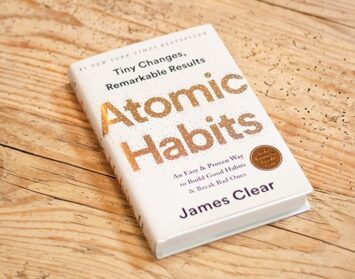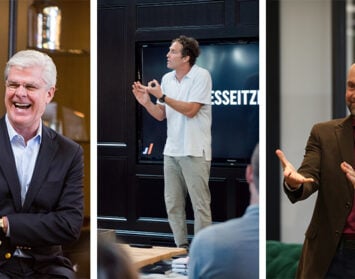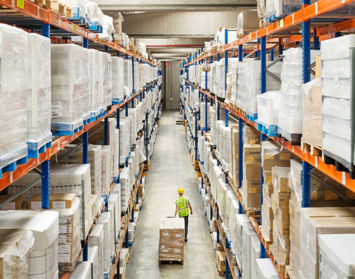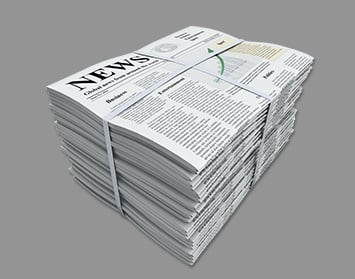Much has been written and said in the news about all the extensive security measures being taken in several major office buildings following last September’s terrorist attacks on the World Trade Center and Pentagon. While those attacks showed the extent to which we were vulnerable and the need to be more cautious, much of the beefed-up security is not all that effective in guarding office workers and visitors against future attacks.
In fact, as recent articles in newspapers have indicated, such steps can actually be self-defeating and add emotional stress to those who lease and work in office buildings where extraordinary measures have been put into effect. And, many of those new steps can add financial burdens onto the backs of nervous tenants.
Let me first say for the record that I certainly support and endorse reasonable security measures and precautions against those incidents we can foresee, uncover and, therefore, prevent. However, let’s be realistic.
The means terrorists use are unpredictable and in the case of Sept. 11, unthinkable, yet many of the heavy-handed security measures some building owners have implemented presume terrorists and other evildoers will use the same tactics. But terrorists generally do not, thereby rendering much of the new security steps almost useless. It’s a little like guarding the empty bank vault after the robbers have left, fearing that they will return.
This nervous trend in excessive building security is evident here in San Diego on a more limited, but still visible, basis.
The most dire example is One America Plaza, a stellar landmark building on the city’s west Broadway skyline. One recent newspaper article reported that building management met with tenants the day after the terrorist attacks to find out what would reassure them that the local building was safe. I’m not sure any reasoned input could have been gathered from anybody on Sept. 12, considering the shock people were in. Most didn’t feel safe anywhere and didn’t know how they could be made to feel so in the days immediately following the attacks. We were traumatized.
Nevertheless, the building management responded to what they heard their tenants telling them, immediately adding eight security positions, restricting floor-to-floor access and, for a while, placing restrictions on those entering the parking garage. Security types are there to watch visitors stand in line to sign in, escort them to the elevators and are visible in almost all the building’s public spaces. Fortunately, management stopped short of installing metal detectors, stripping off people’s shoes to check for plastic explosives and doing anything about the massive plate-glass windows in front of the high-rise.
According to the recent newspaper article, the rationale for the heightened security measures was rooted in the perception that the building is the highest-profile structure in San Diego and the inclusion of “America” in its name and its location a few blocks south of the Lindbergh Field final approach made it especially vulnerable.
The one most unpredictable and shocking thing about Sept. 11 was the terrorists’ use of commercial aircraft to wreak mass destruction and loss of life in New York, Washington, D.C., and Pennsylvania. In terms of One America Plaza’s heightened security, let’s think for a minute about what eight more security guards, sign-in sheets and floor-to-floor access restrictions are going to do to prevent or stop a hijacked plane from soaring into that building or any other downtown structure. In One America’s case, perhaps a ninth security guard should be posted on the building’s roof with Stinger anti-aircraft missiles at the ready.
Also, can anyone read a terrorist’s mind to determine that One America Plaza is especially or singularly vulnerable? Is some lunatic, bent on mass killings and suicide, all that impressed with the building because of its architecture, location or its name? Or for that matter, who’s to say that terrorists prefer high-rise buildings over other densely populated venues such as shopping centers, Qualcomm Stadium, Balboa Park or Sea World? As unthinkable and almost unspeakable as it is, the list goes on. Wouldn’t a strike in an affluent suburb shopping center or other large facility be as shocking and newly unthinkable as the attack on the World Trade Center was just a little more than four months ago?
To that point, lest anyone out in the suburbs feel immune to the threat of terrorist attacks, one expert wrote in a recent urban planning magazine that terrorists would be just as happy to attack a suburban mall as they would to attack cities.
Back to downtown’s new fort. For the present time, tenants in One America Plaza and those other buildings where security has been beefed up are resting easy, knowing that there are extra measures in place. What they haven’t realized yet is the cost impact. Who’s going to pay for all the additional security measures? The tenants, of course, via the “pass-through” expense provisions in their leaseholds. That in itself will add to tenants’ stress and uneasiness when they receive the bills containing those costs.
I am not suggesting there shouldn’t be additional security measures in place in our large office buildings and other major public venues. But there is a point at which additional steps, especially those that are hastily thought out and implemented, become counterproductive.
Sooner or later, the continued presence of oppressive security measures, in addition to being burdensome costs, can and no doubt will contribute to making tenants, workers and visitors feel vulnerable and afraid. Our privately owned office buildings are not embassies, military bases or airports that require rigorous security measures.
Dr. Richard Farson, a psychologist and head of the La Jolla-based Western Behavioral Sciences Institute, said in a recent newspaper article that commercial office buildings should only use “security measures that are quickly accomplished, not intrusive … if they’re invisible, that’s better … low cost, demonstrably effective.”
I couldn’t agree more. There is no way building owners and managers can hire enough security guards, implement enough restrictions or install enough monitoring equipment to guarantee that people won’t be vulnerable to attack. The last thing we should want is for our office buildings to become armed forts that not only restrict people’s legitimate use of public facilities but daily remind all who enter that they should feel uneasy and afraid.
People need to heal and go on with their lives as normally as possible. Downtown’s office buildings are a good place for the thousands of San Diegans who lease space and work there to begin doing just that.
Jason Hughes is founder of Hughes Marino, an award-winning commercial real estate company with offices across the nation. A pioneer in the field of tenant representation, Jason has exclusively represented tenants and buyers for more than 30 years. Contact Jason at 1-844-662-6635 or jason@hughesmarino.com to learn more.









